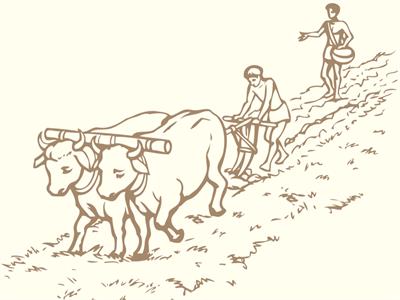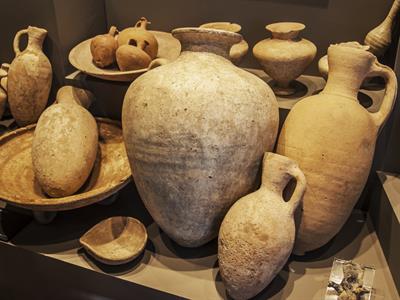PDF chapter test TRY NOW
The Vedic Economy
- The Economy of the Vedic people was based on Agriculture and pastoralism as they had Cattles. It was considered as the greatest wealth among them. Along with them Bronze Smith, Carpenter, Potters, Weavers existed during that period, so the economic system was well structured during the Vedic age.
- People also domesticated animals like horses, sheep, oxen, dogs, cows. They did not have the knowledge of cotton or wheat which was cultivated by the people of IVC.

Vedic Agriculture
- The Agricultural lands and Alluvial depositions of the Indo-Gangetic plains allowed them to cultivate Wheat, Rice and Barley (Pava/Java).
COW: The Vedic people considered the cow as their important wealth among the Cattles, and it was used as the “Standard unit of exchange” during later periods.
- They were also acquainted with the “Barter system of trading - a mutual exchange of commodities between people”. They also used coins while trading namely Satmana, Nishka and Krishnal, while the former two coins are made of gold and the latter was made of Silver.
Pottery
Pot making was one of the occupations undertook by the Vedic people and the famous potteries during this age were,
- Painted Grey ware – These pots are found similar to the pots of the late Harappa period. The designs displayed in these potteries were less intricate compared to the previous periods.

Ochre Colored Pottery
- Ochre coloured pottery (OCP) – This pottery is associated with the copper hoarding features and is believed to the contemporary of the Harappa culture. The colour of these pots ranged from red to orange and was mainly found in Gangetic Valley.
Status of Women during Vedic Age:
Women of the Vedic age enjoyed significant positions in society who were treated on par with the men during the Early Vedic Period.
- They were allowed to get an education and participate in assemblies like Sabha and Samiti, they were also allowed to acquire the knowledge of Vedas.
- Social evils like Child Marriage, Sati and Purdah system were absent during this period and women were also allowed to Remarriages.
- Women enjoyed equal positions in a family with their husbands but were not allowed to inherit the property.
LOPAMUDRA: She was the wife of Sage Agastya who went on to compose two hymns in Rig Veda.
- They participated in Religious ceremonies with their husbands and some women scholars also composed hymns in Rig Veda.
- Their positions slowly witnessed downfall during the later part of the Vedic age where women were prohibited in ceremonies, denied education and Polygamy was practiced which further degraded the position of the women in the society.
Reference:
Ochre Colored Pottery - Enrico Della Pietra / Shutterstock.com
